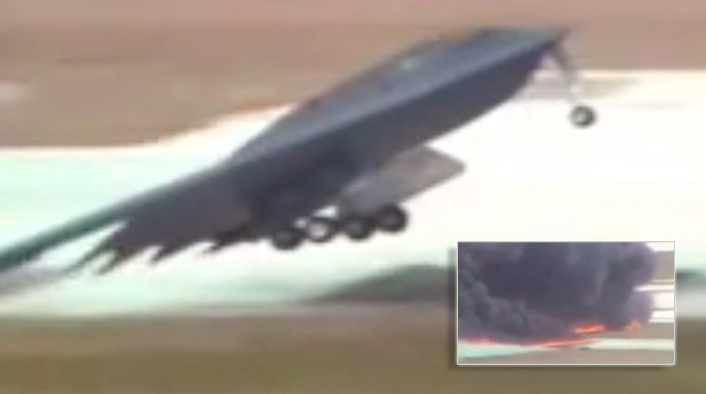B-2 “Spirit of Kansas” #89-0127 crashed on Feb. 23, 2008. It was the most expensive crash in USAF history.
On this day in 2008, the U.S. Air Force lost one of its 21 B-2 Spirit stealth bombers.
The aircraft, #89-0127 “Spirit of Kansas”, belonging to the 393rd Bomb Squadron with the 509th Bomb Wing, from Whiteman Air Force Base, was taking off from Andersen Air Force Base, along with three other stealth bombers, at the end of 4-month deployment in support of U.S. CBP (Continuous Bomber Presence) in the Pacific. Both crew members successfully ejected from the aircraft at low altitude. The B-2 hit the ground, tumbled and burned for a total loss worth about US$1.4 billion, reportedly, the most expensive crash in the history of the U.S. Air Force.
Since take off of the aircraft was being filmed, a couple of interesting videos show the crash pretty well.
The investigation found out that the root cause of the accident was moisture in the air-data sensors: heavy, lashing rains caused moisture to enter skin-flush air-data sensors that gave wrong inputs to the flight-control computers. The combination of slow lift-off speed and the extreme angle of attack resulted in an unrecoverable stall, yaw, and descent.
Here’s what the U.S. Air Force website reported after the report was released:
Moisture in the aircraft’s Port Transducer Units during air data calibration distorted the information in the bomber’s air data system, causing the flight control computers to calculate an inaccurate airspeed and a negative angle of attack upon takeoff. According to the report, this caused an, “uncommanded 30 degree nose-high pitch-up on takeoff, causing the aircraft to stall and its subsequent crash.”
Moisture in the PTUs, inaccurate airspeed, a negative AOA calculation and low altitude/low airspeed are substantially contributing factors in this mishap. Another substantially contributing factor was the ineffective communication of critical information regarding a suggested technique of turning on pitot heat in order to remove moisture from the PTUs prior to performing an air data calibration.
The pilot received minor injuries, and the co-pilot received a spinal compression fracture during ejection. He was treated at Tripler Army Medical Center, Hawaii, and released. The aircraft was assigned to the 509th Bomb Wing at Whiteman Air Force Base, Mo.
At the time of the crash, the B-2 had logged 5,100 flight hours and wasn’t carrying armament.









